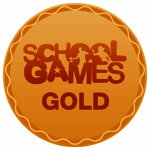- Home
- Curriculum
- Subject Information
- Phonics
Phonics
At Topcliffe we use a structured approach to teaching children how to use phonic sounds in their reading and writing, with the aim that children become fluent readers and accurate spellers.
We teach early reading through the Little Wandle Letters and Sounds Revised systematic, synthetic phonics programme.
When children join us in Reception they will have a daily phonics lesson of 30 minutes which follows the progression from the Little Wandle Letters and Sounds progression document and this continues in Year One to ensure children become fluent readers.
In Reception, we build from 10-minute lessons, with additional daily oral blending games, to the full-length lesson as quickly as possible.
Children make a strong start in Reception: phonics teaching begins in Week 2 of the Autumn term. We follow the Little Wandle Letters and Sounds Revised expectations of progress (please click here for the programme progression document). Four new phonemes and their corresponding graphemes are taught (GPCs) each week and they are then used in the final lesson of the unit to review the week’s learning. Children will also learn tricky words during these sessions.
Reading Practice Sessions
Children in Reception and Year 1, read fully decodable books with an adult twice a week during our ‘Reading Practice’ sessions. These books are then sent home for children to build their reading fluency and showcase their developing skills and phonetic knowledge to their parents/carers. These reading practice sessions each have a different focus; decoding, prosody and comprehension. These early reading lessons in Reception and Year 1 link with the children's phonic skill level and decoding ability and they read from closely matched phonetically regular books to support them in developing reading fluency, comprehension and understanding and confidence in their reading ability
In Year 2 when children at Topcliffe have completed the phonics teaching programme and have sufficient fluency and decoding skills, they will then begin the No Nonsense Spelling Programme, which takes them through to Year 6. Both teaching approaches follow the structure of review, teach, practise and apply.
During each academic year, parents in Reception and Year 1 are invited to Phonic Workshops to introduce the teaching approach and to develop their understanding of how they can support their child at home.
We assess children every 6 weeks as part of the programme to identify any gaps in learning and to check and monitor progress. In addition to this the children take part in the statutory Phonics Screening Check at the end of Y1 which is designed by the government to assess how well children nationally have mastered the skill of using phonics. Children who do not meet the required pass mark in Year 1 will receive further support and phonics teaching in Year 2 and they can re-sit the test at the end of Year 2.
By the end of KS1, children will be fluent at decoding, and by the age of 11, we aim for children to be able to:
-
read with confidence, fluency and good understanding, drawing upon a range of independent strategies to self-monitor and correct;
-
have an interest in a wide range of reading materials and read spontaneously for enjoyment and pleasure;
-
read confidently to acquire information;
-
acquire a wide vocabulary, an understanding of grammar and knowledge of linguistic conventions for reading;
-
meet age related expectations for reading, with the aspiration to exceed them.

Supporting your child with reading
Although your child will be taught to read at school, you can have a huge impact on their reading journey by continuing their practice at home. There are two types of reading book that your child will bring home in Reception, Year 1 and Year 2.
Reading practice book
This book has been carefully matched to your child’s current reading level. If your child is reading it with little help, please don’t worry that it’s too easy – your child needs to develop fluency and confidence in reading.
Listen to them read the book. Remember to give them lots of praise – celebrate their success! If they can’t read a word, ask them to decode (sound it out) and blend it. After they have finished, talk about the book together.
Sharing book
In order to encourage your child to become a lifelong reader, it is important that they learn to read for pleasure and enjoyment. The sharing book is a book they have chosen for you to enjoy together.
Please remember that you shouldn’t expect your child to read this alone. Read it to or with them. Discuss the pictures, enjoy the story, predict what might happen next, use different voices for the characters, explore the facts in a non-fiction book. In addition, after reading the book you can pick out some words and help them to expand their vocabulary by discussing alternatives for these words. The main thing is that you have fun sharing a book together!
| Subject Documents | Date | |
|---|---|---|
| Phonics Subject on a Page | 11th Sep 2022 | Download |





